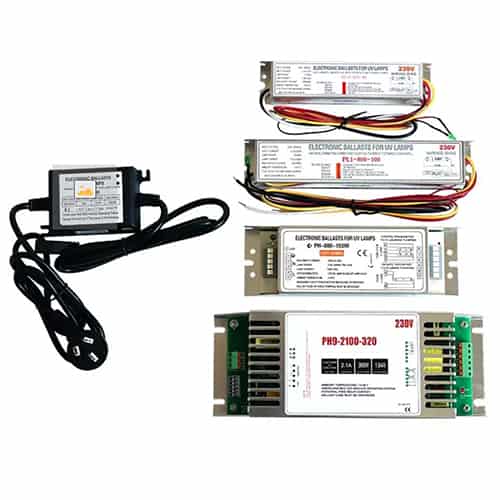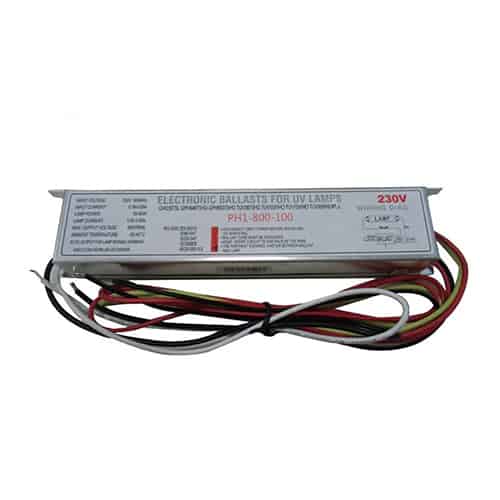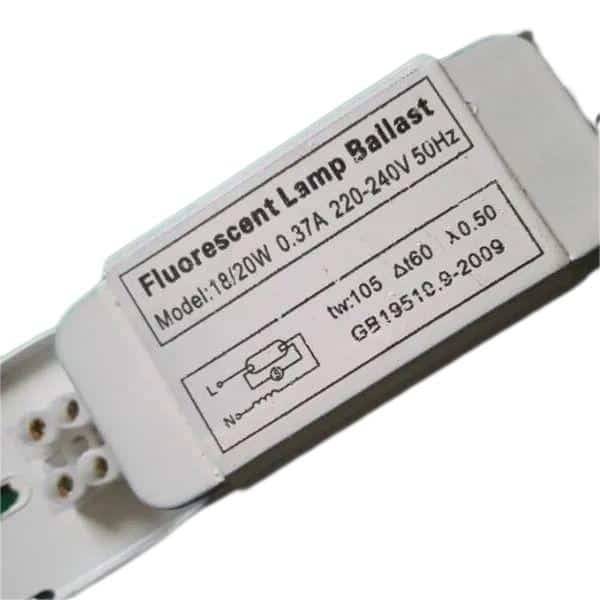Fluorescent lights without ballasts can be a pain. They flicker, don’t always start, or are inefficient, giving you bad light. The answer to this problem is a ballast for your fluorescent light. The ballast helps the light work right by controlling the voltage and the electricity that goes to the light, so it doesn’t flicker.
A fluorescent light ballast is a critical part of a fluorescent light. It controls the electrical current going to the light so it doesn’t get too much. It helps the light start by letting a bunch of electricity go through it at first and then less after the light comes on. If you don’t have a ballast, your fluorescent lights will use too much electricity and won’t work right.
How Does a Fluorescent Ballast Work?
The operation of a fluorescent ballast is both simple and effective. To ignite a fluorescent light, a high voltage is required to establish an electric arc between the electrodes within the lamp. The ballast provides this initial high voltage, which excites the gas within the tube, allowing the lamp to light. Once the arc is formed, the ballast reduces the voltage and limits the current to a safe level to maintain consistent illumination. Essentially, the ballast ensures that the lamp does not draw too much current, preventing overheating and prolonging the life of both the lamp and the electrical system.
In simple terms, the ballast acts as a current limiter. It guarantees that once the lamp is operating, the electrical current remains stable. This stability prevents flickering, buzzing, and other issues commonly associated with faulty or outdated lighting systems.
Types of Fluorescent Ballasts
There are two primary types of fluorescent ballasts: magnetic ballasts and electronic ballasts.
- Magnetic Ballasts are the traditional type, utilizing electromagnets to control the flow of electricity. While they have been widely used for decades, magnetic ballasts are now considered less efficient compared to modern alternatives. One major downside is that they tend to produce a buzzing sound and flickering light due to the frequency of the current they regulate. Despite this, they are still used in some industrial settings due to their robustness and simplicity.
- Electronic Ballasts, on the other hand, are the more advanced and energy-efficient option. These ballasts use electronic components to control the current at a much higher frequency, which eliminates flickering and buzzing. Because they are smaller, quieter, and more efficient, electronic ballasts have become the standard choice for modern lighting systems in both residential and commercial applications. They also help reduce overall energy consumption, contributing to lower electricity bills.
Why Are Ballasts Necessary for Fluorescent Lamps?
Ballasts are critical for the operation of fluorescent lamps for several reasons. First, they protect against overcurrent, which is essential because, without a ballast, the lamp could draw an unlimited amount of current, causing the fixture to overheat and fail. The ballast acts as a safeguard, ensuring that the current remains within a safe range.
Second, a ballast provides the necessary starting voltage. Fluorescent lamps require a significant jolt of electricity to initiate the flow of electrons and create the arc between the electrodes. The ballast supplies this high voltage and then quickly reduces the current to maintain safe and efficient operation.
Finally, ballasts regulate current during normal operation. Fluorescent lamps are more sensitive than incandescent bulbs, so it’s crucial to have a device that ensures the flow of electricity is steady and reliable. This is what prevents common problems such as flickering, buzzing, or uneven light output.

Fluorescent Ballast Lifespan and Maintenance
The lifespan of a fluorescent ballast can vary depending on its environment and usage. However, most ballasts are designed to last for many years, especially if they are well-maintained. Factors like temperature, humidity, and the number of hours the lamp is used can all influence how long a ballast lasts.
Signs of Ballast Failure include flickering lights, buzzing sounds, or lamps that fail to start. These signs often indicate that the ballast is malfunctioning and may need to be replaced. It’s important to conduct regular maintenance checks on your lighting systems, ensuring that the wiring is secure and that the ballast is not overheating. Replacing a faulty ballast is usually straightforward and can restore your lighting system to optimal performance.
In environments where lighting systems are critical, such as commercial offices or industrial warehouses, having a functioning ballast is essential. Proactive maintenance can prevent costly downtime and ensure that lights are operating at maximum efficiency.
Common Applications of Fluorescent Ballasts
Fluorescent ballasts are found in a variety of settings due to the widespread use of fluorescent lighting. These include:
- Office Buildings: Fluorescent lights with ballasts are commonly used in office spaces because they provide bright, even lighting ideal for work environments.
- Warehouses and Manufacturing Facilities: Ballasts in industrial settings ensure reliable and cost-effective lighting for large spaces.
- Hospitals and Schools: Consistent, high-quality lighting is essential in environments where focus and attention to detail are critical, making ballasts an important component.
- Retail and Supermarket Lighting: Ballasts help maintain well-lit spaces, which are crucial for visibility and showcasing products effectively.
Energy Efficiency and Fluorescent Ballasts
With increasing focus on energy conservation, electronic ballasts have become the preferred choice for modern lighting systems. These ballasts are designed to use less energy than traditional magnetic ballasts, which can translate into significant savings on electricity bills over time. Additionally, electronic ballasts contribute to a reduction in overall environmental impact by consuming less power.
Many electronic ballasts are also compatible with smart lighting systems, offering additional features like dimming and automated controls that optimize energy use. This not only extends the life of the lamp but also allows businesses to reduce energy consumption during non-peak hours, further enhancing efficiency.

Ballast Compatibility and Regulations
When choosing a fluorescent ballast, it is essential to ensure compatibility with the lamp it is designed to support. Ballasts are rated for specific voltage and wattage ranges, and using an incompatible ballast can result in reduced efficiency or premature failure of the lighting system. It is also important to adhere to energy regulations. In many regions, magnetic ballasts have been phased out due to their lower efficiency. Modern electronic ballasts often comply with certifications such as CE, UL, and RoHS, ensuring they meet global standards for safety and energy efficiency.
For businesses and individuals investing in lighting systems, choosing the right ballast is crucial for both performance and compliance with regulations. Proper selection and maintenance of ballasts can lead to long-term savings and improved lighting quality.
Final Words:
A fluorescent light ballast is a critical piece of your fluorescent light. It helps control the voltage, protects the light from too much power, and helps your light work right. With the option for an electronic ballast, your lights are better than ever.

